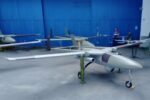Redwire Corporation and Red Cat Holdings have jointly unveiled a new concept for a 3D-printed tactical drone designed to meet the demands of rapid deployment in contested environments. Leveraging space-grade composite materials and additive manufacturing techniques, the concept aims to accelerate the development of lightweight unmanned aerial systems (UAS) optimized for intelligence, surveillance, and reconnaissance (ISR) missions.
Rapid Prototyping Meets Tactical UAS Needs
The new drone concept is the result of a collaboration between Redwire—an established player in advanced space infrastructure—and Red Cat Holdings’ subsidiary Teal Drones. The prototype was fabricated using Redwire’s proprietary space-capable 3D printing technology at its facility in Longmont, Colorado. The goal is to demonstrate how additive manufacturing can drastically reduce production timelines for tactical drones while maintaining structural integrity and performance.
According to both companies, the prototype airframe was printed in under 12 hours using high-strength thermoplastic composites originally developed for space applications. These materials offer superior strength-to-weight ratios compared to conventional polymers or aluminum alloys used in many Group 1–2 UAS platforms. The use of additive manufacturing also enables on-demand customization of airframe geometry based on mission requirements or payload configurations.
“This collaboration demonstrates how dual-use technologies developed for space can be rapidly adapted to meet urgent defense needs,” said John Vellinger, President of Redwire’s Mission Solutions & Engineering business unit. “The ability to print a structurally sound drone airframe in less than a day opens new possibilities for field-level logistics and resupply.”
Teal Drones Integration Points Toward Future Productization
While the current design remains an early-stage concept demonstrator, it draws heavily from Teal Drones’ operational experience with its Golden Eagle platform—a modular quadcopter selected by the U.S. Army as part of its Short Range Reconnaissance (SRR) program. The Golden Eagle is known for its secure communications stack compliant with Blue UAS requirements and its swappable payload architecture.
The new prototype appears to share similar form factors with Teal’s existing designs but incorporates structural elements that are only feasible through additive manufacturing—such as internal lattice structures or integrated cable routing channels that reduce assembly complexity.
Teal CEO George Matus emphasized that this project represents more than just a proof-of-concept: “We’re exploring how this could evolve into future production lines where drones are printed close to the point of need—whether that’s at forward operating bases or mobile command centers.”
Operational Implications: Speed-to-Field and On-Demand Manufacturing
The strategic value proposition lies in dramatically reducing lead times between design iteration and field deployment. Traditional drone production cycles often span weeks or months due to tooling constraints and supply chain dependencies. In contrast, additive manufacturing allows near-instantaneous transition from digital design files to functional airframes.
- Speed: Airframe fabrication under 12 hours enables rapid replenishment after attrition or loss.
- Customization: Mission-specific variants can be produced without retooling lines.
- Sustainability: Potential use of recycled thermoplastics or in-theater material stock.
This aligns with broader Department of Defense (DoD) initiatives around expeditionary logistics and distributed manufacturing under programs such as Joint All-Domain Command & Control (JADC2). In scenarios where contested logistics limit traditional resupply routes—such as Indo-Pacific island chains or Eastern European forward deployments—the ability to print drones locally could prove decisive.
Additive Manufacturing Trends in Defense Aerospace
The defense sector has increasingly embraced additive manufacturing not only for prototyping but also for end-use parts across airframes, engines, and sustainment components. The U.S. Air Force has used metal AM parts aboard F-15s; Lockheed Martin has integrated printed titanium brackets into F-35s; and Raytheon has explored printed missile fins.
Drones present an ideal application area due to their low weight thresholds and modularity. Companies like Spee3D have demonstrated battlefield-ready printers capable of producing metal parts under austere conditions. Meanwhile, DARPA’s NOMAD program explores deployable microfactories for autonomous vehicle production near frontlines.
The Redwire/Red Cat initiative adds momentum by focusing specifically on small UAS platforms—a segment seeing explosive demand due to Ukraine conflict lessons around FPV drones and loitering munitions. While this prototype is not weaponized nor designed as a loitering munition per se, it showcases how ISR platforms can be rapidly scaled using digital-first workflows.
Challenges Ahead: Certification, Survivability & Autonomy
Despite promising speed advantages, several hurdles remain before such concepts can transition into operational inventory:
- Aerodynamic Validation: Printed geometries must undergo wind tunnel testing or CFD validation to ensure flight stability.
- COTS Electronics Integration: Additive shells must accommodate off-the-shelf avionics without EMI issues or thermal stress points.
- BLOS Communications: For beyond-line-of-sight operations in GPS-denied environments, robust comms stacks will be essential—possibly requiring integration with mesh networks or SATCOM relays.
- DOD Certification Pathways: Any deployment within Blue UAS framework will require cybersecurity vetting via DIU protocols.
If these challenges are addressed systematically—with iterative testing cycles supported by digital twins—the pathway toward field-printable ISR drones becomes more viable over the next 24–36 months.
A Glimpse Into Future Battlefield Logistics
This joint effort between Redwire and Red Cat exemplifies how commercial innovation pipelines—from aerospace composites to agile software-defined avionics—are converging toward battlefield applications. As peer adversaries invest heavily in electronic warfare denial zones and anti-access/area denial (A2/AD) strategies, Western forces will need flexible ISR assets that can be deployed quickly without reliance on centralized depots.
If successful at scale-up phases—including survivability testing under EW stressors—the concept could enable U.S., NATO allies, or partner forces to maintain persistent situational awareness even under degraded conditions. Moreover, it opens possibilities for allied nations with limited industrial capacity but access to digital files and polymer feedstock to generate sovereign drone fleets on demand.










